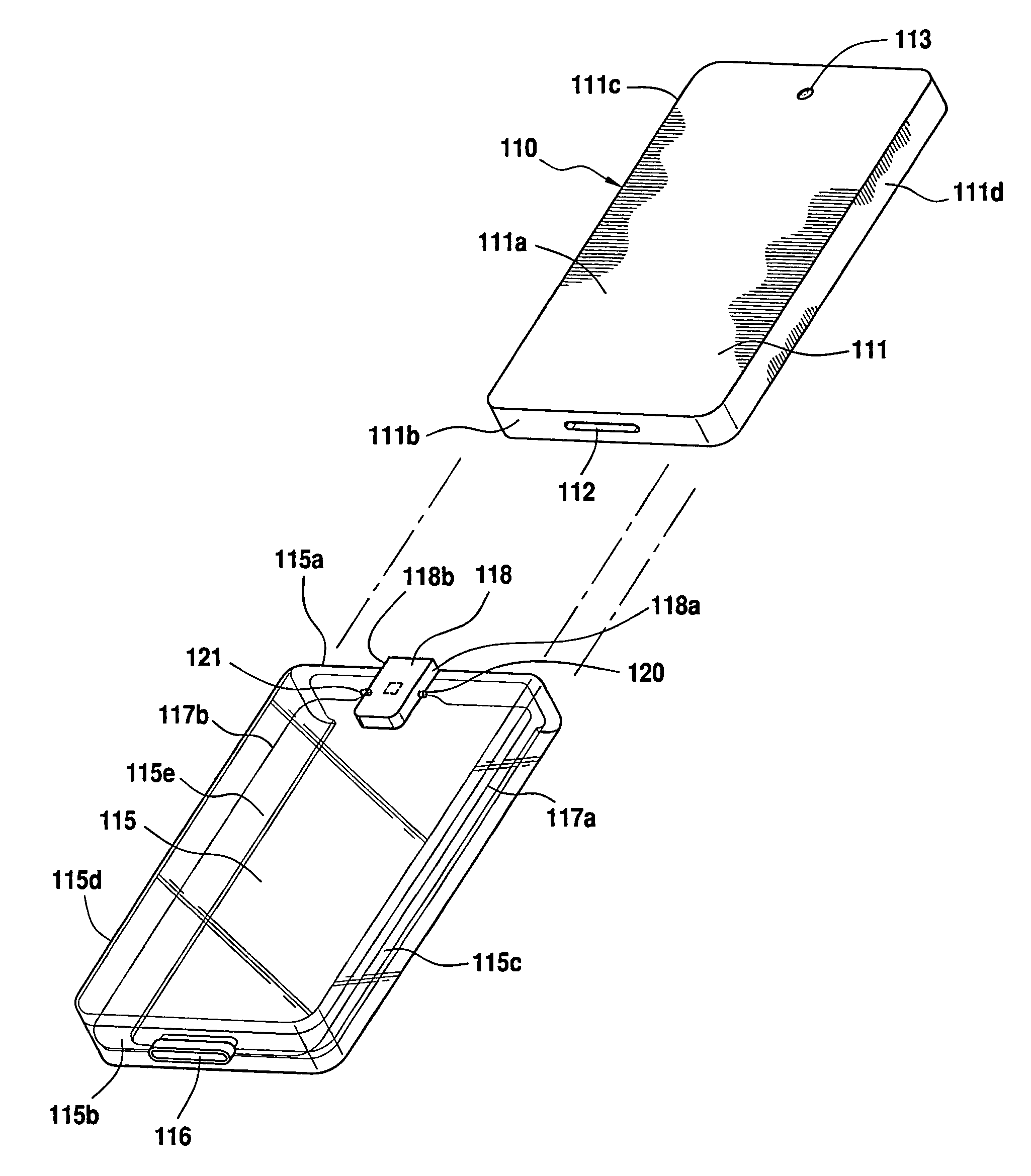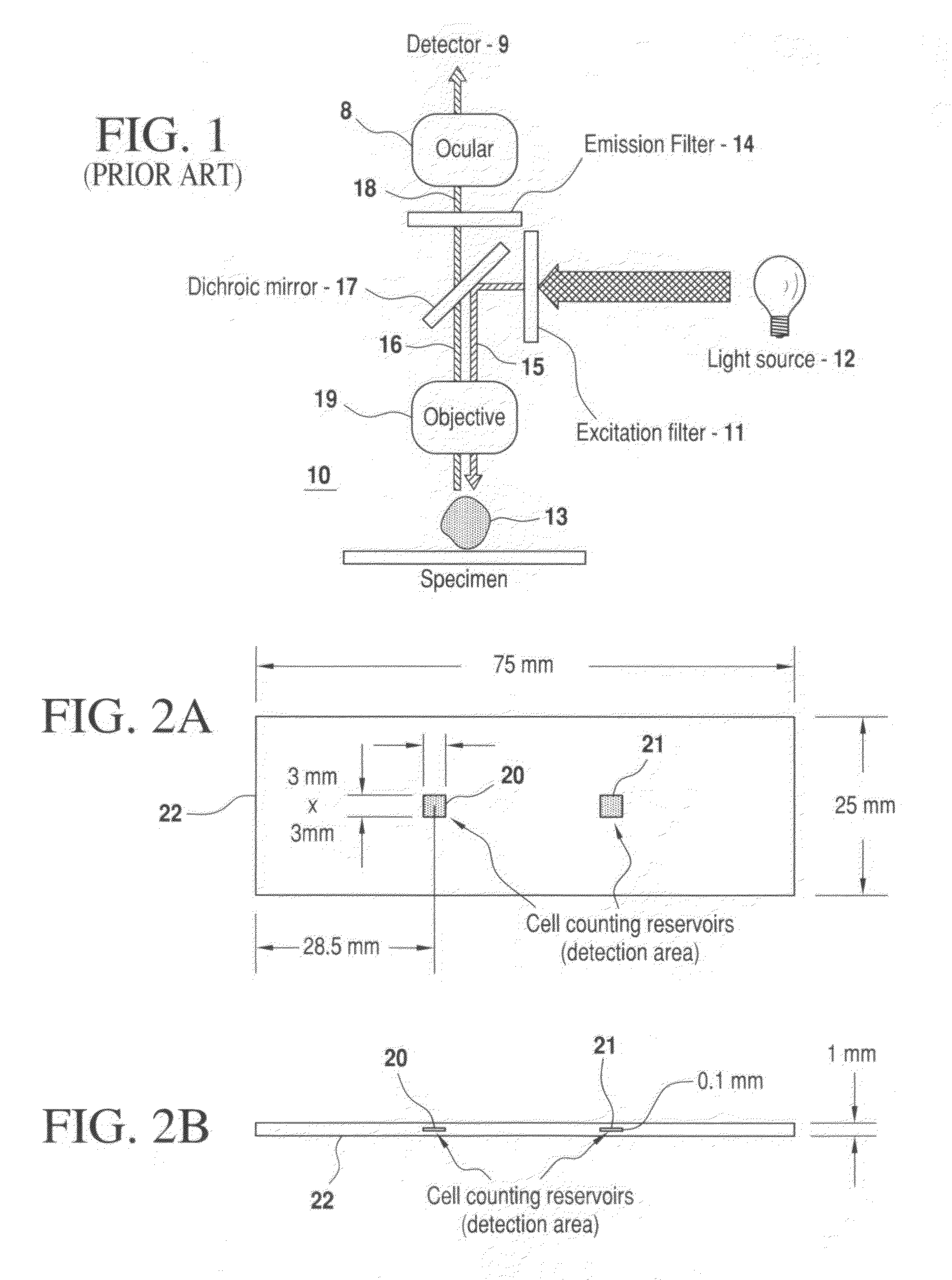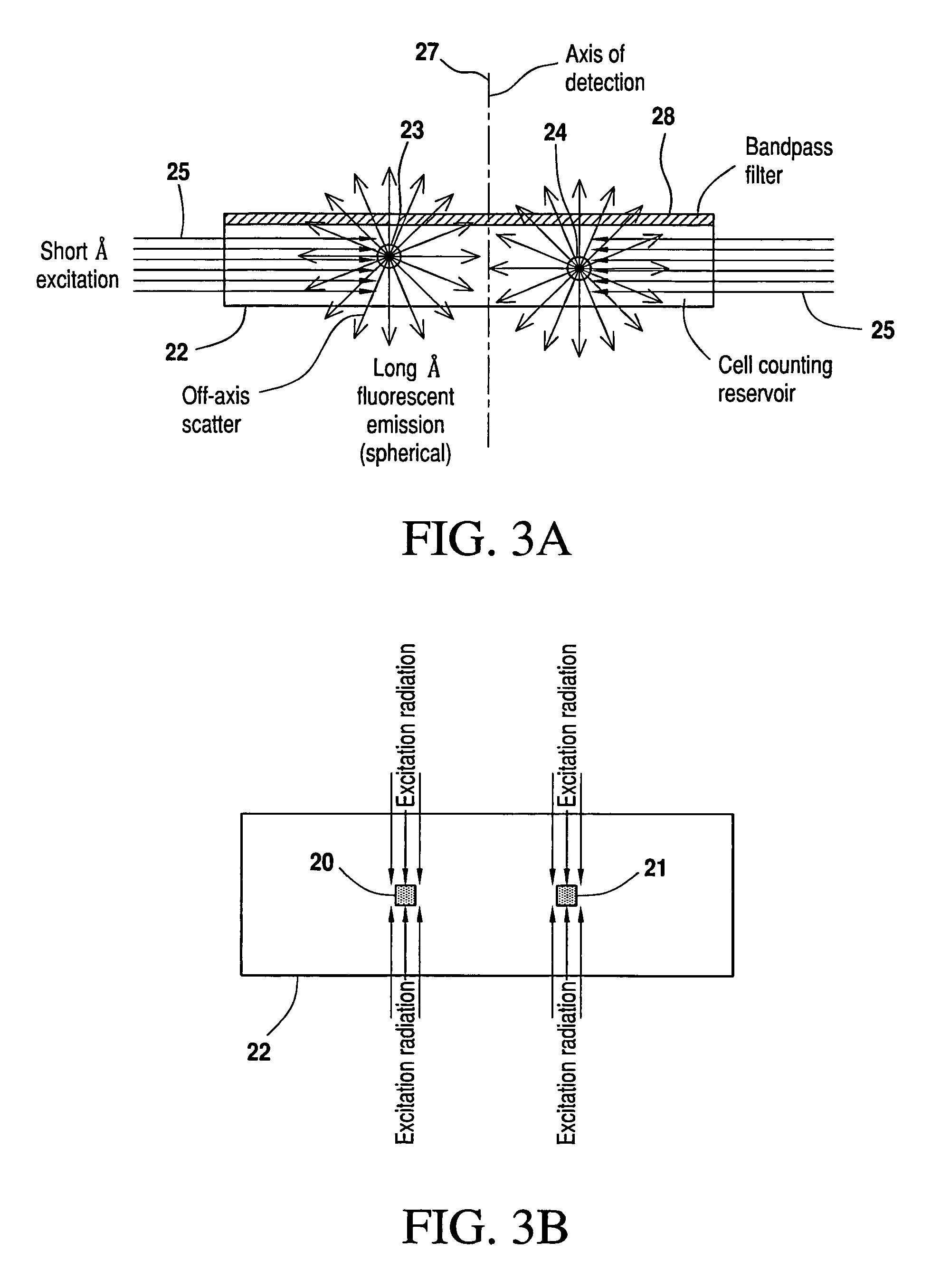Compact portable apparatus for optical assay
a portable, optical assay technology, applied in the direction of fluorescence/phosphorescence, material excitation analysis, instruments, etc., can solve the problems of insufficient resource-limited settings and environments, methods that have not found widespread application, and bulky and expensive,
- Summary
- Abstract
- Description
- Claims
- Application Information
AI Technical Summary
Benefits of technology
Problems solved by technology
Method used
Image
Examples
Embodiment Construction
[0051]To overcome the luminous inefficiencies of optical assay apparatus of the prior art, and assist in achieving improved, low-cost, and portable fluorescence readout and detection apparatus, the present invention employs relatively tiny light sources such as light emitting diodes (LEDs). Used in a prototype implementation of the invention, LEDs have demonstrated overall luminous efficiencies approaching 40-45% (see FIG. 7, for example). Unlike typical sources of broadband radiation, LEDs emit photons via the mechanism of electroluminescence, with radiation wavelengths that may be tuned to a relatively narrow range according to the band gap energy of the semiconductor or other organic material used to fabricate the source. This enables matching emission wavelengths with peak absorption wavelengths of various fluorescent reporter elements to eliminate the need for bandpass excitation filters. Indeed, as much as 100% of the wavelength band emitted by a suitably selected LED can be a...
PUM
| Property | Measurement | Unit |
|---|---|---|
| thick | aaaaa | aaaaa |
| wavelengths | aaaaa | aaaaa |
| volume | aaaaa | aaaaa |
Abstract
Description
Claims
Application Information
 Login to View More
Login to View More - R&D
- Intellectual Property
- Life Sciences
- Materials
- Tech Scout
- Unparalleled Data Quality
- Higher Quality Content
- 60% Fewer Hallucinations
Browse by: Latest US Patents, China's latest patents, Technical Efficacy Thesaurus, Application Domain, Technology Topic, Popular Technical Reports.
© 2025 PatSnap. All rights reserved.Legal|Privacy policy|Modern Slavery Act Transparency Statement|Sitemap|About US| Contact US: help@patsnap.com



